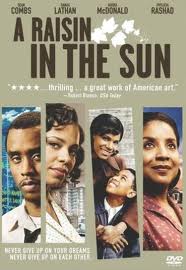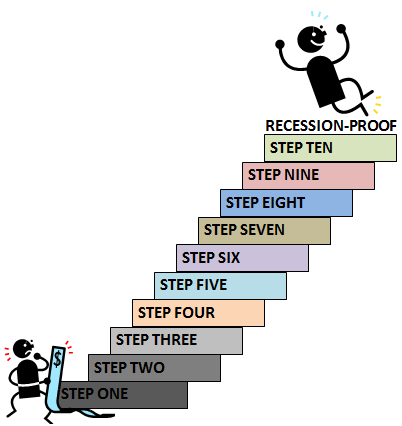Have you ever tried catching a monkey? Maybe not here in the US but maybe you’ve heard of one often mentioned method. In Africa, as the story goes, they cut a coconut in half, hollow it out, put a ripe orange in the middle and then seal the coconut back together leaving only a hole small enough for a monkey to get his hand through to the middle of it.
mentioned method. In Africa, as the story goes, they cut a coconut in half, hollow it out, put a ripe orange in the middle and then seal the coconut back together leaving only a hole small enough for a monkey to get his hand through to the middle of it.
In India, as I understand it, they’ve used the exact same method except theirs involves taking a gourd, cutting a small hole in it and then putting some rice inside. They then secure the coconut (or gourd) using rope and a tree. Then they wait.
Soon enough, an unsuspecting monkey will swing by and smell the orange or the rice and stick their thin hand into the fruit. They’ll grab the treat and then attempt to pull their hand out. Unfortunately, the hole is only large enough for them to get their hand in or out, if it is open. However, with a clinched fist, the monkey is not able to remove its hand. And thus it continues to try until a net is thrown over it and the monkey is caught.
 All the while the monkey was trying to remove his hand from the coconut (or gourd), it never dawned on him to simply let go. And thus, the greedy monkey leads us to our seventh step in this 10-step process to creating a Recession-Proof marriage and household.
All the while the monkey was trying to remove his hand from the coconut (or gourd), it never dawned on him to simply let go. And thus, the greedy monkey leads us to our seventh step in this 10-step process to creating a Recession-Proof marriage and household.
STEP SEVEN: Let stuff go.
Some of you will be able to follow the first six steps in this plan for a Recession-Proof marriage and that’s all you will need. But for some, it’s not as simple as outlining a radical vision for emerging from the pits of debt or simply becoming determined to free your family from the bondage of slavery (as the Proverb says, “…a borrower is slave to the lender”). For some of you, that will only get you halfway there. You need more. Step seven and step eight (which we’ll discuss on Monday) are specifically for you.
For those joining us today for the first time, I encourage you to go back and review Step One, Steps Two and Three, Step Four, Step Five and Step Six. For your ease, I’ve included a brief synopsis of each step below. But I definitely recommend taking the time to go back and read each step individually.
STEP ONE: Stop comparing yourself to others and learn to be content (or even better, happy) with exactly what you have in this moment. As Rick Warren said and I love repeating, “If the grass is greener on the other side, that’s because your neighbor has a higher water bill!”
STEP TWO: Team up with your partner in life, your spouse, and pray for wisdom. This is different from the prayers you may have prayed until now. You’re not asking Him to magically make your debt disappear or magically increase your income. You’re asking Him for the wisdom to allow you to do it yourself. No one knows your financial future better than Him so that is the life source you want to stay connected to throughout this process and beyond.
STEP THREE: Strip down your image. There is no doubt that a part of the instruction God will give you will require great sacrifice and that means you will need to be okay with whatever anyone else may think of you. Don’t allow your fear of what others may think keep you straddled with the burden of debt. It’s just not worth it.
STEP FOUR: The 10/90 Rule. Many financial experts will tell you about the 80/10/10 rule and it is what Keith and I follow. But I learned early in my adult life that the 80/10/10 was a goal but for those desiring to financial freedom, the 10/90 rule is a requirement. It is what I used 15 years ago to turn my financial situation around and I’ve never met a person for whom it did not work.
STEP FIVE: Allowance isn’t just for kids. You’ve probably discovered, like most people I know, that budgets are similar to New Year’s Resolutions: everyone makes them but few actually follow them (at least beyond the first month or two). Budgets are usually blown but allowances are not.
STEP SIX:Redefine the American Dream. This step begins the process of helping you pay off your debt and learn to live below your means. Keeping up with the Joneses, Kardashians, Steins or anyone else is a recipe for failure. Defining the American Dream for yourself is the key to success.
And now…
STEP SEVEN: Let stuff go.
As you know by now, a few years ago, Keith and I made the decision to work toward becoming debt-free. A few months earlier, many financial analysts had predicted the United States was headed for its second Depression, and Keith and I knew we had not properly prepared to weather such a financial storm. Shortly before coming to this conclusion, Keith stumbled across a fantastic book (we highly recommend) by author Dave Ramsey called The Total Money Makeover. It completely changed the way we viewed, spent, and saved our money.
We’ve been incredibly blessed and fortunate to have avoided the vast majority of financial challenges  many have endured during this recession. However, that had less to do with our actual finances and more to do with God’s grace, the plan we set into motion at the offset of this recession, our mindset and determination to K.I.S.S: Keep it Super Simple.
many have endured during this recession. However, that had less to do with our actual finances and more to do with God’s grace, the plan we set into motion at the offset of this recession, our mindset and determination to K.I.S.S: Keep it Super Simple.
Early in our marriage, we made a commitment to each other to pursue as simple of a life as possible while maintaining our drive and desire to succeed in every aspect of our lives. Striving for a simple life meant we would need to learn to wear our possessions lightly, meaning we would need to be willing to shed whatever belongings caused us stress, the way marathon runners shed their jackets.
If you’ve ever seen a marathon on television, or if you’ve run in one, as I did several years ago, you’ll notice something peculiar at the start of every race. Most of the runners come with sweatshirts, trash bags, and light jackets covering their upper body. The reason is most marathons begin early in the morning when it is still quite cold outside. However, shortly after the race begins and the runners take off, those jackets, sweatshirts, and trash bags begin lining the first mile of the race.
Prior to the beginning of the 26.2-mile race, participants had the luxury of wearing those warm outer garments. However, once their bodies started heating up, they all quickly shed the extra layers, laying them down by the wayside as if they were trash. At the end of each race, marathon volunteers pick up the clothing and donate the items to a local charity to keep others warm.
Keith and I agreed that if the going got tough, our toughness would be exhibited in our ability to simply walk away from our material possessions. We would not be so prideful as to hold on to something we could no longer afford.
walk away from our material possessions. We would not be so prideful as to hold on to something we could no longer afford.
We live in a rural community outside of Los Angeles. It is an equestrian community with large parcels of land, hundreds of horses and wonderful neighbors. The only downside to this town is our sewer system. We all have septic tanks instead of in-ground plumbing. When our septic tank got stopped up one day, we called a repair company out to fix it. After diagnosing the problem, they determined we would need to completely replace the system. The dismal report saddened us momentarily because based on their estimate the repair costs would far exceed what we’d set aside for household repairs and emergencies.
Since we knew the cost of the repairs would be a burden on our household, we decided—without hesitation—we would get a second opinion and if the second mirrored the first, we would sell the house (likely at a loss) and get a much smaller, less expensive place nearby.
This decision took little to no thought, because we’d already made the commitment to keep our finances as simple as possible. Thankfully, a second company gave us a completely different opinion, and we were able to keep the place we affectionately named, Serenity Ranch. However, we would have walked away in a heartbeat if it meant compromising the peace within our relationship.
Keep in mind, Serenity Ranch, is not just a house to us. This is where we hoped to raise our kids, grow old together and hang out all day once we’d retired. This home was and still is a very special place for us. But if the happiness in our marriage would have been in jeopardy, this house would have had a big, fat “For Sale” sign in front of it faster than you can say, “Sell! Sell! Sell!”
 Are there material possessions you’re holding on to that by letting go would bring you greater peace? In the past year or so, we’ve recommended more people than I can remember short sale their home. No, it’s not the ideal solution but if a home is causing such a financial burden that it’s become an tremendous weight on your family, walk away. Deed in lieu of foreclosure, short sale, it doesn’t matter. Just figure out a way to let it go.
Are there material possessions you’re holding on to that by letting go would bring you greater peace? In the past year or so, we’ve recommended more people than I can remember short sale their home. No, it’s not the ideal solution but if a home is causing such a financial burden that it’s become an tremendous weight on your family, walk away. Deed in lieu of foreclosure, short sale, it doesn’t matter. Just figure out a way to let it go.
Do you know of people who have so much stuff they pay for storage space? Are you one of those people? If so, this is where you can start. Clearly, the things in storage are not items you’re using every day. They’d likely fall under the category of excess. Yes, they might be wonderful things you plan to use at a later date, but we’re talking about freeing your family from debt and rising from the ashes of this recession.
Pull together all the stuff you don’t need; anything in storage that can be replaced at a later date when your family is in a better financial position. And have a big ole’ garage sell. Yep, I said it. Sell that stuff! Go online and sell on eBay, Craigslist and anywhere else you can unload your family “extras.”
Start purging yourself of things you no longer need. Free up as much cash as possible so you can begin paying off your debt. The faster you can pay on the principle of something you’ve previously put on credit, the sooner you can stop wasting precious dollars on interest.
paying off your debt. The faster you can pay on the principle of something you’ve previously put on credit, the sooner you can stop wasting precious dollars on interest.
I don’t think it’s necessary for me to give you a step-by-step plan on letting stuff go. You know how to do it. You just have to do it. It might be tough at first but look at it a different way. Picture all the extra “stuff” you have as a weight on your shoulders. Then as you sell one item and then another and then another, that weight continues to get lighter and lighter.
 Here’s the bottom line for Step Seven: Don’t be a monkey. Debt and material possessions are only a trap if you refuse to unclench your fist. But once you determine to start letting stuff go, you’ll begin to taste the freedom your heart desires.
Here’s the bottom line for Step Seven: Don’t be a monkey. Debt and material possessions are only a trap if you refuse to unclench your fist. But once you determine to start letting stuff go, you’ll begin to taste the freedom your heart desires.
If you’ve changed your mindset to know longer care about image and how others perceive you, created a radical vision to get your family out of debt, sold the excess stuff you own and you still find it impossible to get ahead. Step Eight, which we’ll discuss on Monday is for you: Working 9-to-5, is nota way to make a living (I know the “not” isn’t included in the Dolly Parton lyrics but it is included in Step 8).
Until Monday…make it a great weekend!

Comments: With more than 15,000 Happy Wives Club members already actively engaged on our Facebook page, what better place to share your thoughts? Join me there and let’s continue the conversation: Happy Wives Club Facebook































































